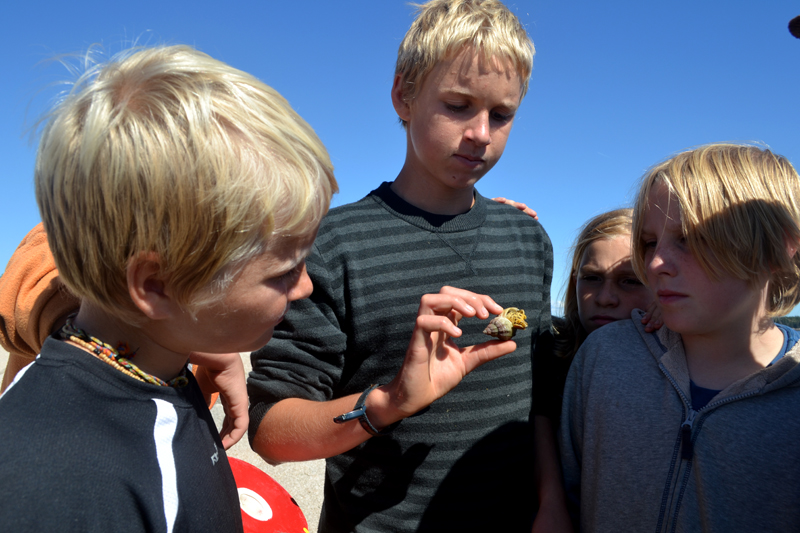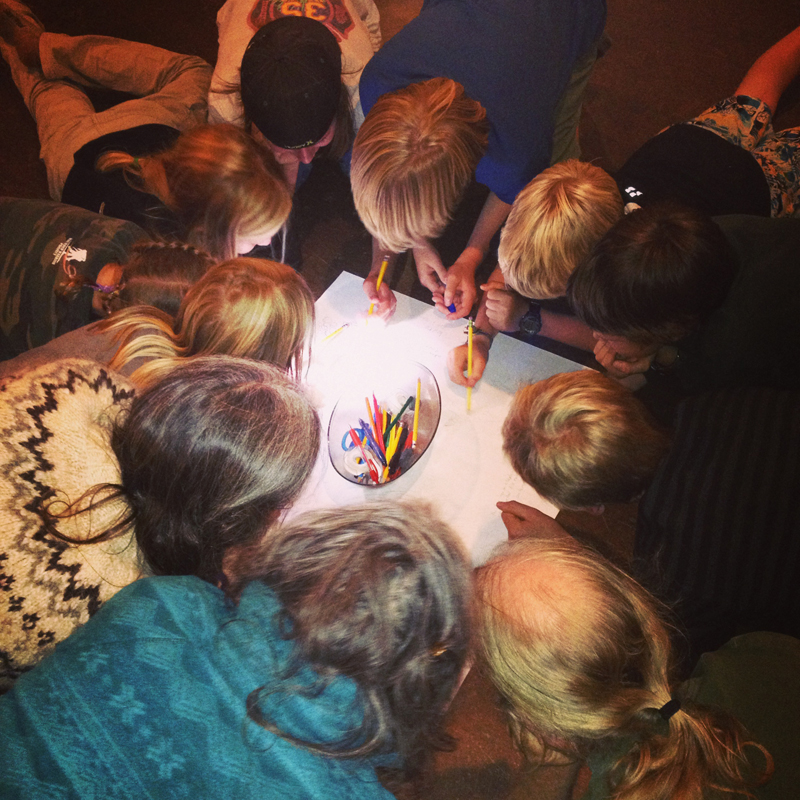Looking at lichens in the lab with Alice before the lichen hike
Enjoying the intertidal on Two-Bush Island
The Ashwood Waldorf School from Rockport, Maine joined us on Hurricane for two days of island exploration. For the Botany focus of this program Alice took them on a walk around the island to find and identify the three main categories lichens: crustose, foliose, and fruticose. Another hike focused on the wild edible plants on the island, as well as what plants are flowering out during this stage of spring. Students also got a chance to explore the intertidal area between Hurricane and Two Bush Island. They found lots of fun and interesting intertidal creatures, and learned how kelp survives as a marine plant.
The last day was spent rock climbing. Students learned about different types of climbing gear, how to boulder on granite blocks that were cut from the main face over a century ago, and how to belay and support one another while climbing. Everyone completed their own successful climbs and enjoyed being able to reach the top and enjoy the view out over the open ocean.
One of the best parts of this program was having Ashwood’s program overlap with Nobleboro Middle School. While it can be a dance for us instructors of who is teaching what to who, when and where, it’s great to see us all gathered together at meal times, sharing our island stories from the day!











